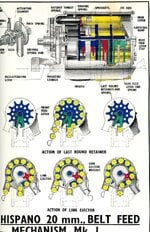Shortround6
Lieutenant General
You forgot Francs.Nope, I don't accept that it was impossible to develop a good working MK 213 C clone in a shorter timescale. The industries were dragging it out for £££ ($$$).
It was a multi nation industrial conspiracy
Each nation's gun guys betting the other nations gun guys don't stab them in the back and offer a working gun for a lucrative contract before they do.
Somebody had mounted an electric motor under a Gatling gun before 1900 (V belt). Didn't mean it was a viable aircraft weapon system.
US Navy and US Air Force didn't agree on guns for a number of years and both had several different weapons development programs.

